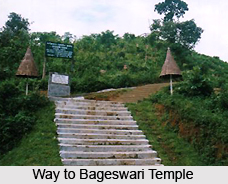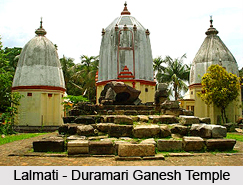 The decision of the Government of Assam in 1989, to create a new District of Bongaigaon curving out some areas of the Goalpara and Kokrajhar District with its headquarter located at Bongaigaon was quite challenging. It was the political and administrative exigencies which had necessitated to create this new district suddenly although the people of Bongaigaon and the adjoining areas were demanding a new Sub-Division with its headquarter to be located at Bongaigaon from the very beginning.
The decision of the Government of Assam in 1989, to create a new District of Bongaigaon curving out some areas of the Goalpara and Kokrajhar District with its headquarter located at Bongaigaon was quite challenging. It was the political and administrative exigencies which had necessitated to create this new district suddenly although the people of Bongaigaon and the adjoining areas were demanding a new Sub-Division with its headquarter to be located at Bongaigaon from the very beginning.
This decision to create a new District, Bongaigaon was quite challenging because the very idea to create such a district was neither a long standing one nor a tested one. Moreover, the decision to set up a district headquarter at Bongaigaon was more challenging as there was no Sub-divisional infrastructure in this town, whereas the other newly created district head quarters of Assam had Sub-divisional infrastructures of their own. In the absence of such basic infrustructural facilities, the initiation of the activity of the district headquarter was almost started on the street, which was not only challenging task but also novel one.
Bageswari Temple
Bageswari Temple on the top of in the middle of Bongaigaon town is proposed to be developed as afforested hillock with a garden and a small artificial lake fed by a perennial stream This would improve the water catchment area of the town and the surrounding environment.The Bhageswari Hill houses acients Shiva temple inside a stone cave flanked either side by another 2 temples mainly temple of Bhageswari and Baba Tarak Nath. Every year 15 to 20 thousand devotees visit to the Bhageswari hill top.
Rock Cut Caves
The best speciments of the architecture of the Salasthambha period are the remains of the five rock-cut caves at Jogighopa on the bank of the Brahmaputra in the district of Bongaigaon. These are the unique examples of rock-cut architecture in Assam. Though these rock-cut caves are not of such architectural interest as those in Western India, but these remains at Jogighopa are the clear evidence of the fact that Assam was not outside the movement of this particular type of art developed in India as it will be seen from description of the best preservedcave noticed at Jogighopa.
 This Cave measures 2.60 m breadth ,1.8 metre in depth and 1.90 metre in height and also a roughly rounded ceiling and in front a verandah 75 cm long by 35 cm broad. A platform of brick and mud masonry is found inside which is obviously a later addition. A chase running across the entire breath of the cave on the top serves to drain away rain water from the facade. Flights of steps have been cut into the rock on either side and ledge on the top diverts the rain water from the facade. The cave bears no sculptural designs. The other caves at the site have no flights and verandah and smaller in size than the best preserved one.
This Cave measures 2.60 m breadth ,1.8 metre in depth and 1.90 metre in height and also a roughly rounded ceiling and in front a verandah 75 cm long by 35 cm broad. A platform of brick and mud masonry is found inside which is obviously a later addition. A chase running across the entire breath of the cave on the top serves to drain away rain water from the facade. Flights of steps have been cut into the rock on either side and ledge on the top diverts the rain water from the facade. The cave bears no sculptural designs. The other caves at the site have no flights and verandah and smaller in size than the best preserved one.
This architectural site has been taken up by the Archaelogical survey of India for preservation.
The Lalmati-Duramari Ganesh Temple
The Lalmati-Duramari Ganesh Temple near Abhayapuri town under North Salmara Sub-Division, is one of the oldest temples of the state.
The historicity of the images are yet to be ascertained. But after a study of the stone carving and modes related to the carved idols, archeologists opine that the temple and images belong to 8th to 10th centuries AD.
There are three views advanced as the reason for destrcution of the temple .The first view has it that eartquakes during the 8th and 10th centuries destroyed the temple and its images, while according to tyhe second view, Kalapahar who revolted against worshipers and priests, destroyed the temple along with other temples and images in the North-East. The third view has it that Burmese(Maan) invaders who camped at Malegarh(Manegarh) hills destroyed the temple along with the idols. But it seems that eartquake has been the prime cause of the destruction of the temple.



















